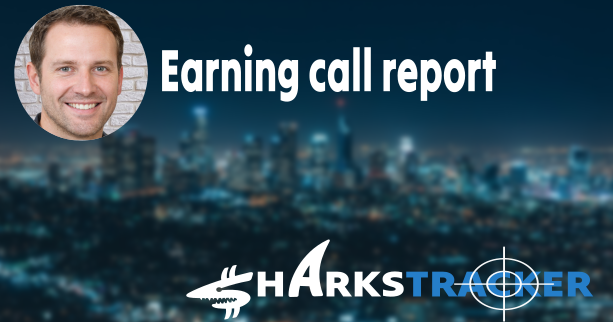Capital One's Outlook: Navigating Regulatory Changes and Growth Opportunities
2023-08-01
Capital One, a financial company, recently held a call meeting to discuss various important topics that are crucial to their business. One of the main focuses of the meeting was Capital One's net interest margin (NIM) and the potential for it to return to historical levels. This topic holds significant interest as it could have a substantial impact on the company's operations.
During the meeting, the company addressed a proposal that may become a rule in the industry. This proposal is of great importance to Capital One, and they are actively working on solutions to navigate any potential changes it may bring. The company acknowledges that these solutions will take time to implement and may require strategic adjustments. To fully understand the implications of this proposal, a deeper analysis of its details, effects on the card marketplace, and Capital One's plans to adapt is necessary.

In terms of market outlook, Capital One predicts a slight increase in the unemployment rate, which is expected to remain in the 4s through 2024. The company is more focused on the rate of job creation rather than the level of unemployment itself. They are also considering downside scenarios that could result in higher losses in the second quarter of next year. Delinquencies are seen as a leading indicator of charge-offs, and the company acknowledges the competitive nature of the market while recognizing potential economic challenges. Despite this, the credit normalization trend indicates potential opportunities in the market.
The competitive landscape in the credit industry was described as rational and balanced during the meeting. Capital One expressed positivity about the competitive environment, citing strong margins and favorable metrics on originations and existing accounts. In the auto business, the company sees an opportunity for expansion due to normalized pricing, but they also highlight the need to monitor used car prices, which are expected to decline. On the commercial side, Capital One has taken a different approach compared to other banks by focusing on the office portfolio and unloading several billion dollars.
The meeting also highlighted key performance indicators (KPIs) such as the Net Interest Margin (NIM) and marketing expenses. The company's NIM was compared to historical levels, with factors like consumer behavior and funding rates potentially impacting its final resting place. Marketing expenses were noted to be flat compared to the previous quarter and down 12% year over year. However, the company emphasized that this shouldn't be seen as a significant trend, as they are actively focusing on marketing to drive growth. Capital One highlighted the expansion of products and marketing channels, leveraging technology transformation, and customized solutions to achieve good performance.
Looking ahead, Capital One expressed a positive outlook for the quarter and year. While there may be some seasonal effects on compensation, it is not expected to significantly impact the company's trajectory. The company remains confident in reaching historical Net Interest Margin (NIM) levels, although external factors such as consumer behavior and Federal Reserve actions could influence the final outcome. Marketing spending has remained flat compared to the previous quarter, but the company sees attractive growth opportunities, particularly in the card business, and is expanding its products and marketing channels. Overall, Capital One is optimistic about its future prospects.
The call meeting included several participants, including Jeff Norris, the Senior Vice President and Chief Financial Officer, Andrew Young, the Chief Financial Officer, and Rich Fairbank, the Chief Executive Officer. Additionally, prominent analysts from financial institutions such as Goldman Sachs, JPMorgan Chase and Company, Bank of America Merrill Lynch, Morgan Stanley, Keefe, Bruyette and Woods, Wells Fargo Securities, and Citi were present. This diverse group of participants reflects the high level of interest and engagement in Capital One's financial performance and strategic direction.
During the meeting, the spending behavior and credit cycle of consumers were discussed. Capital One noted that while their customer base has grown, spending per customer has moderated and is now generally flat compared to the previous year. This moderation in spending was observed across different income bands, card segments, and both discretionary and nondiscretionary categories. The company views this spend moderation as a sign of rational and healthy consumer behavior.
The representative also mentioned that payment rates and revolve rates are normalizing but have not yet reached pre-pandemic levels. This indicates underlying strength in consumer behavior, although there may be some deferred charge-offs driving up credit losses. The company's CEO discussed the credit cycle and its relationship with the economy, emphasizing their focus on the credit cycle rather than predicting the economy.
Overall, the call meeting provided valuable insights into Capital One's current performance, strategic plans, and outlook for the future. The company remains focused on maintaining a strong customer franchise, navigating potential regulatory changes, and capitalizing on growth opportunities in the market.

